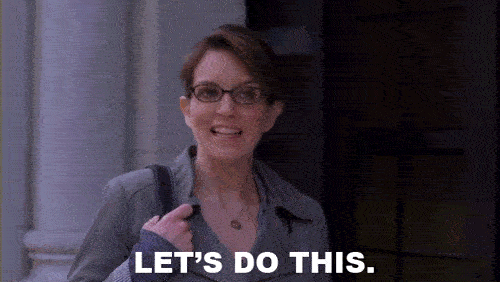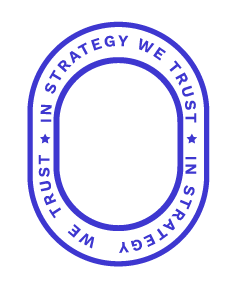
Digital, Marketing, Strategy
We are months into a worldwide pandemic, and there are still many unknowns. But, two things are certain:
- Most businesses need to adjust their marketing strategy to endure, and
- Digital marketing is the key to making that transition successful.
It’s common to put more pressure on marketing during a recession. Expectations are that it will achieve more with fewer resources while still providing a high return on investment. While this is possible, under current conditions it requires reallocating marketing dollars to digital marketing tactics. An article from Forbes says it best:
“We are in uncertain times, but with the increase of remote working and a collaborative approach, companies are turning to digital channels and embracing the transformation. We have seen a real spike during the last few weeks from companies wishing to create or update websites, launch new eCommerce channels and create social media campaigns focused on home-workers and a real focus on using influencers and SEO to reach new audiences.”
For businesses that have been slow to transition from traditional to digital marketing, time is running out. Some businesses have transitioned their budgets to include digital channels. But, they can gain valuable market share by accelerating that transition and fully embracing a digital strategy. As we’ve previously discussed, businesses that maintained or increased their advertising budgets during a recession actually received positive results in the marketplace.
Real-World Cases of Digital Pivots
CASE STUDY 1: In-Face to Internet
In the pre-coronavirus world, one of our technology clients relied heavily on trade shows and other events to generate leads. When that channel disappeared under social distancing restrictions, we realigned their budget to establish an automated marketing program coupled with a digital and retargeting advertising program. Working with their sales and marketing department, we developed a strategy to digitally educate their target audience on the problems the company solves, drive online demos signups, and retarget website visitors with advertisements to drive them back to the client’s website.
CASE STUDY 2: Social Presence to Social Powerhouse
For one of our municipality clients, we were consistently creating social media content that produced impressive engagement numbers with their audience. However, their audience size was stagnating. So, we worked with them to create a social media advertising plan and budget that included boosting posts, social media ads, and interacting more with followers. Over the course of just a few months, their social media account likes grew by thousands.
CASE STUDY 3: Advisors to Advisees
It’s not only our clients that needed to reassess their marketing strategy as a result of the pandemic. We also took the opportunity to change our own strategy. We developed a new website with messaging and information targeted to our ideal client personas. The website is also optimized to work with marketing automation and digital advertising programs that we are currently developing.
It’s decision time for many businesses, especially when it comes to marketing budgets. Businesses that down-size their marketing and advertising budgets in reaction to current social and economic conditions are in danger of losing a significant amount of business. Or, worse yet, losing their business entirely. Those that adjust their strategy, invest in developing a strategic marketing plan, and transfer their marketing and advertising dollars to digital will have a significantly better chance for success in the year ahead.
Liked this article? Here are a couple more we thought you’d be interested in:
by hoydencreatstg | December 26, 2023 | Branding, Digital, Strategy | 0 Comments
The Power of Branding in Wealth Management In the dynamic world of wealth management branding often takes a backseat. Yet, in this world, a well-defined brand can be a game-changer – influencing client attraction, retention, and market expansion. Today, every industry...
by mollymason | June 27, 2016 | Marketing, Strategy | 0 Comments
The Scenario Here's a scenario we see fairly often: Phil, our small business owner friend, is eager to grow his business with some additional types of marketing. He hears of all these things his competitor is doing or that he sees other businesses doing, and wants to...

Branding, Events, Strategy
by Paige Fuoco, Designer
Trade shows are a great way for your business to meet potential clients and build brand awareness. In order to maximize your return on investment you should develop a strategic plan, ensuring your business will be the one everyone is talking about.
Begin your strategy by mapping out your objectives, tactics, and anticipated outcomes. Whether you are looking to raise brand awareness or generate sales leads, you must plan with a purpose in order to reach your goal. If you aren’t sure where to begin, take a step back and look at where your business is headed and what your priorities are moving forward.
Remember to be mindful of a realistic timeline and budget before you dive in to your strategy. Not every company can afford all the bells and whistles that come with exhibiting at a trade show, and if you plan accordingly, you won’t have to. With a timely schedule, practical budget, and creative mindset you’ll be five steps ahead of half the companies you’re competing with.
So, I have a strategy. Now what?
As the exhibitor, one of the biggest struggles is standing out from other companies. If you’ve been to a trade show before you know that pretty much all booths look the same and everyone is fighting for attention. Sure, every now and then someone lets you spin a wheel to win a free consultation, but it’s safe to say that method isn’t necessarily impactful.
So, how do you make a lasting impact? Think outside the booth.
Trade shows are typically targeted at a specific industry, so a good number of people attending should be interested in what you have to say – or so we can assume. This is a perfect opportunity to showcase your creativity and offer something that other companies aren’t. Our recommendation? Get with your creative team and figure out how to get some one-on-one time with prospective attendees. From our experience, this usually means taking them away from the crowded conference instead of forcing something to happen there. Maybe you take a group of five for coffee and bagels, or a group of thirty for drinks and apps.
Putting the Creative Pieces Together.
Trade shows allow you to put a creative twist on your brand. Work with your team to develop a theme for the event and stick to it. Consider concepts that people will relate to, and in turn, will remember long after the event. Is there a major sporting event coming up? Is the next season of Game of Thrones premiering? People enjoy making connections, and you’ll have better luck standing out if they can relate to your creativity.
Once you’ve decided on a plan, go through the list of attendees expected to visit – which organizers will often provide to you – and narrow down who you are interested in meeting with. Once you have a targeted group of people you can get to work on invitations and other event materials. Here are a few things you should consider:
- Ad placement – If you’re lucky, the conference host will run print or digital ads prior to the event, giving you the opportunity to showcase some assets from the branded theme your creative team put together.
- Invitations – Now that you have a plan of attack, you’ll want to invite people to be a part of your exclusive get-together. The most effective way to do this is running an email campaign. We recommend this over snail mail because you can dictate the exact time of day your audience receives the invitation and review stats from each time you send. You can also include more photos, landing page links, and even video.
- Day-Of Essentials – You now have a list of attendees who will be joining you for some one-on-one time and you want them to feel like they made the right decision. Put together a take-away packet with a company white paper and some event-branded materials. This is a great time to include an exclusive promotion and some items different from those at your booth.
- Booth – Though you’ve already differentiated your company from the others, you can’t neglect your booth. Be sure to do something bold and eye-catching and to include the assets from the theme you created. And, please don’t give away another stress ball or company t-shirt, you can do better than that.
Measure Your Outcomes.
Now that you’ve wowed your guests and made a great impression for your brand, it’s time to measure the outcomes. If your goal was to build brand awareness, take a look at social media engagement – use of hashtags, increase in followers, growth in overall media coverage. If you aimed to bring back leads, ask yourself how they transferred back into the sales funnel – follow up with a phone call, plan a lunch meeting, or whatever method your sales model supports. The evaluation of your objectives is a critical component to your strategic process and will allow you to see what was successful and what new information you can learn from.
It might seem difficult to stand out at crowded events like trade shows but remember that you strategically and creatively planned your impact, and people appreciate thoughtful marketing.

Branding, Networking, Strategy

Sarah Stanley (left) and Molly Mason (right)
March 13, 2019—The Brand Establishment Managing Partners Russ Cornelius and Jacquie Francisco recently announced the newest team members to their core group of talented and strategic thinkers, Sarah Stanley and Molly Mason of Hoyden Creative. Stanley, the Chief Executive Officer and Mason, the Chief Business Officer, founded Hoyden Creative in Adrian, MI nearly five years ago and serve the greater Detroit and Toledo markets.
Hoyden Creative is Michigan’s first agency to have Certified Brand Strategists through the Brand Establishment. While strategy has always been a part of Hoyden’s work, the Brand Establishment offers a peer network across North America to support continued learning and best practices. With this certification and continued training, brand strategy will take an even more prominent role in projects.
“Five years ago, we started projects with a heavy design and communication focus. Now we are partnering with our clients on their biggest business challenges,” said Sarah Stanley, CEO and co-founder. “We are providing brand strategy to clients seeking funding, mergers, or reinventing themselves.”
The Brand Establishment’s Certified Brand Strategists specialize in delivering services to align business strategy with the internal and external brand. Organizations that have worked with these strategists can build their businesses beyond expectations with increased sales, improved communications, and stronger employee loyalty. Their marketing investments yield greater efficiencies and ROI.
The process to receive certification requires hours of book work, a case study, and a presentation to peers. “It wasn’t long after working with both Sarah and Molly in the training process that I realized they would be a perfect fit for our group of like-minded agency principles. We all approach brand strategy and marketing with the same strategic emphasis,” said Francisco.
“Our certification strengthens the strategic brand development and marketing work we were already doing,” added Mason. “With the new research and strategy tools from The Brand Establishment, we are already helping businesses and non-profits identify the brand strategy that will not only improve their external marketing efforts but more importantly strengthen their brand by focusing on internalizing the brand strategy to improve culture, operations, customer service, and communication.”
Stanley and Mason have a combined 40 years experience in the area of communications, marketing, design, and brand strategy. Their team works with B2B, B2C, non-profits, and economic development organizations throughout Michigan and Ohio.
About The Brand Establishment
The Brand Establishment’s mission is to clear up the decades-long misconceptions surrounding branding and brand development, as well as provide new tools and smart brand-building strategies to small and mid-sized agency owners. The organization also helps to advance brand strategy’s increasing importance and recognized value in growing and sustaining profitability for companies, organizations and businesses.
Many communications firms and consultants claim to be “brand experts,” though they have no formal training or credentials in this area. Through the certification process and on-ongoing training opportunities, The Brand Establishment develops brand strategists who can lead any brand to greater success. For more information, visit www.brandestablishment.com.

Branding, Marketing, Public Relations, Strategy

Is it just me, or has the world of marketing been going a little too well over the past few weeks? It seems as though there was a faint ticking sound coming from the marketing campaign time bomb, just waiting to blow.
Since the unfortunate airing of the Kendall Jenner Pepsi commercial or the United Airlines passenger mishap, there really hasn’t been any exciting marketing and PR news. Well, that all changed last week when Bedrock Detroit decided to launch its “See Detroit Like We Do” campaign. I wouldn’t necessarily say I’m pleased that another campaign finally fell through the cracks, but you must agree that it was long overdue.

For those of you who haven’t seen it yet, Bedrock Detroit placed a sign with the slogan “See Detroit Like We Do,” that filled the windows along the ground level of a building in downtown Detroit. That doesn’t sound too bad, right? Wrong. The photograph featured mostly white individuals in a city that is widely known for its diverse culture.
Yikes! Now What?
How companies handle unfortunate situations like the Bedrock Campaign is crucial for their ongoing success. Luckily, Dan Gilbert, founder of Bedrock Detroit and Quicken Loans, was able to address the situation with both speed and grace. “We screwed up badly the graphic package that was partially installed on the retail windows of the first floor of the Vinton Building, in downtown Detroit,” Gilbert said in an open letter posted on Bedrock Detroit’s Facebook page.

“Although not intended to create the kind of feelings it did, the slogan/statement we used on these graphics was tone deaf, in poor taste and does not reflect a single value or philosophy that we stand for at Bedrock Development or in our entire Family of companies,” the letter said. “We have killed the ‘See Detroit Like We Do’ campaign.” It looks like someone payed attention in public relations class! Bravo, Dan.
So, What Did We Learn?
The mistakes that companies make can be very detrimental to both their finances and public image. This is where the PR department must weigh its options; to act or not to act—that is the question.
- Act. And act quickly. When bad news hits you directly, you need to respond immediately.
- Give your organization a face. At this point you’re already dealing with bad publicity, so you want to present your company as one which people can connect with.
- Present the facts. Considering the media driven world we live in, many situations become twisted and can make your situation out to be worse than it is, so act truthfully.
- Be transparent. Allowing people to see how and why things went wrong can help your image in the future.
- Own up to your mistakes. Aside from acting quickly, this might be the most important step. People don’t want to hear the run-around of excuses. Admit your faults and move on.
- Be sincere. Most people can cut through a lot of business talk and empty words. If they can hear sincerity, they are more likely to be forgiving.
While it is somewhat unsettling to see our fellow marketers make these mistakes, it’s an eye-opening experience for anyone involved—particularly the audience. Put yourself in their shoes; see your message through their eyes. You don’t want to be the one to set off that ticking time bomb.
Branding, Communication, Marketing, Strategy
Have you noticed an uptick in messages about self-love and acceptance these days? You know, the messages encouraging you to embrace who you are and what makes you different; to really own it. It’s a nice way of saying quit trying to be someone you’re not! In marketing, as we continue to work on personifying brands, it’s not a stretch to carry over that mentality.
Are you owning your brand or struggling in the identity department? Let’s do a little self-diagnosis.
Here are three signs you have a brand identity problem:
Your answer to “What do you stand for?” changes depending on who is asking.
You make marketing decisions based on what’s trendy rather than brand strategy.
You have a lukewarm relationship with your target audience.
If any of these questions strike a chord, it’s time to go back to basics with your brand. It’s not an insult or a sign of weakness; major brands regularly revisit their strategy to evaluate and adjust for maximum effect. This will get you back on track and ahead of those who are too proud to admit they have a problem.
There are many more elements to building up a wow factor, but these are the ingredients for a strong foundation.
Brands, like people, grow and develop over time. They need constant assessment to understand what they stand for over the years or else they will become outdated and unrelatable.
- Be sure of your values and target audience, and be mindful of just how those two things overlap.
- Understand the needs of your audience and how they wish to be reached.
- Present yourself consistently in terms of messaging and frequency.
Make your Marque
What happens when you get to the point where you own your brand? You aren’t hiding behind anything and you aren’t trying to imitate others. You are no longer worried about pleasing every person on the planet, because you know that is just not going to happen. (Really, it’s not.) Instead, you know that by owning your brand, you’ll attract people that value what you value.
Branding, Marketing, Strategy

The definition of the term “brand” or “branding” has been debated on for many years. What began as a company name, slogan, and logo has become a complex marketing strategy that defines who you are and what your company represents. Good branding increases the overall value of a company, provides direction, and makes working with other businesses easier. So, what’s stopping you?
IDENTIFYING A BRAND
Deciding on the direction of your brand can be intimidating and very time consuming. It is easy to get stuck on a specific idea for your brand that might not be the best option. This is when it’s beneficial to step back and look at your company from a consumer’s standpoint. Consumers decide whether your brand is worth remembering, so their opinion is key in the development process.
- Identify your positioning.
- Establish company values.
- Determine target audience.
- Where do all of these develop? That is your brand.
CREATING A BRAND BOARD
Putting together a brand board for your company is arguably one of the best ways to develop a visual brand. Brand boards allow you to lay out all aspects of your company so that they are accessible to your employees. They also serve as a reference point when working with other companies, ultimately ensuring consistency and error-free work. Sometimes when something is laid out, it is easier to see elements that don’t belong, or cause friction instead of harmony.
 When designing a basic brand board, we are always sure to include:
When designing a basic brand board, we are always sure to include:
- Logos & Tagline – Including all renditions and how to properly apply them.
- Colors & Elements – Including Pantone colors if applicable, and any design elements like patterns, textures, or other visual motifs.
- Fonts – Including body, title, and accent text.
- Photography – Including photos that are regularly used, providing a few examples of the style and mood to help with maintaining consistency.
IF YOU’VE GOT IT, FLAUNT IT
Once you’ve developed a brand, it is important to get people talking about it. People love to tell their friends about the brands they like, but they can’t tell someone about a brand they can’t remember. That said, do you ever wonder how companies show up out of the blue and suddenly become the only thing anyone can talk about? Well, besides being in the right place at the right time, there is a strategy behind this mysterious phenomenon:
- Create an awesome website
- Have a strong social media presence
- Be unique
- Build relationships with your customers
- Know your brand and stay committed to it
REMEMBER
A strong brand is crucial to generating referrals and creating viral traffic, but proper decision making is critical in its success. We all know of a company that offers great products or provides excellent services, but has a tarnished brand due to poor decision making. Don’t be one of those companies. Take the time to identify a brand and maximize its potential.
















 When designing a basic brand board, we are always sure to include:
When designing a basic brand board, we are always sure to include: